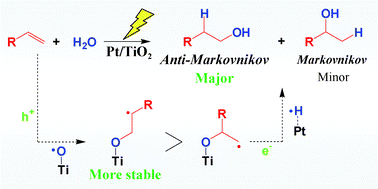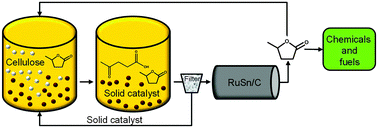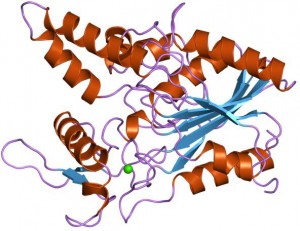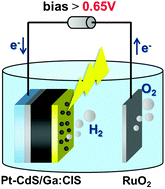This month sees the following articles in Catalysis Science & Technology that are in the top ten most accessed:-
Design of hierarchical zeolite catalysts by desilication
Danny Verboekend and Javier Pérez-Ramírez
Catal. Sci. Technol., 2011,1, 879-890 DOI: 10.1039/C1CY00150G
A rational interpretation of improved catalytic performances of additive-impregnated dried CoMo hydrotreating catalysts: a combined theoretical and experimental study
V. Costa , B. Guichard , M. Digne , C. Legens , P. Lecour , K. Marchand , P. Raybaud , E. Krebs and C. Geantet
Catal. Sci. Technol., 2013,3, 140-151 DOI: 10.1039/C2CY20553J
New trends in the synthesis of crystalline microporous materials
Giuseppe Bellussi , Angela Carati , Caterina Rizzo and Roberto Millini
Catal. Sci. Technol., 2013, Advance Article DOI: 10.1039/C2CY20510F
Advances in conversion of hemicellulosic biomass to furfural and upgrading to biofuels
Saikat Dutta , Sudipta De , Basudeb Saha and Md. Imteyaz Alam
Catal. Sci. Technol., 2012,2, 2025-2036 DOI: 10.1039/C2CY20235B
Graphene-based materials for catalysis
Bruno F. Machado and Philippe Serp
Catal. Sci. Technol., 2012,2, 54-75 DOI: 10.1039/C1CY00361E
The role of MoS2 nano-slabs in the protection of solid cracking catalysts for the total conversion of heavy oils to good quality distillates
Giuseppe Bellussi , Giacomo Rispoli , Daniele Molinari , Alberto Landoni , Paolo Pollesel , Nicoletta Panariti , Roberto Millini and Erica Montanari
Catal. Sci. Technol., 2013,3, 176-182 DOI: 10.1039/C2CY20448G
Catalytic activity of unsupported gold nanoparticles
Yusuke Mikami , Amarajothi Dhakshinamoorthy , Mercedes Alvaro and Hermenegildo García
Catal. Sci. Technol., 2013,3, 58-69 DOI: 10.1039/C2CY20068F
Towards environmentally benign catalytic oxidation
Alfons Baiker and Tamas Mallat
Catal. Sci. Technol., 2013,3, 267-267 DOI: 10.1039/C2CY90058K
Mesostructured zeolite Y—high hydrothermal stability and superior FCC catalytic performance
Javier García-Martínez , Marvin Johnson , Julia Valla , Kunhao Li and Jackie Y. Ying
Catal. Sci. Technol., 2012,2, 987-994 DOI: 10.1039/C2CY00309K
Copper N-heterocyclic carbene complexes in catalysis
Jonathan D. Egbert , Catherine S. J. Cazin and Steven P. Nolan
Catal. Sci. Technol., 2013, Advance Article DOI: 10.1039/C2CY20816D
Why not take a look at the articles today and blog your thoughts and comments below.
Fancy submitting an article to Catalysis Science & Technology? Then why not submit to us today or alternatively email us your suggestions.















